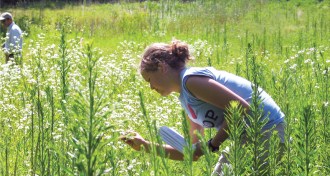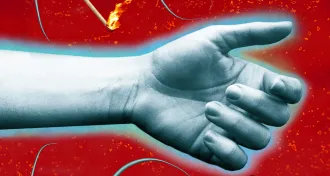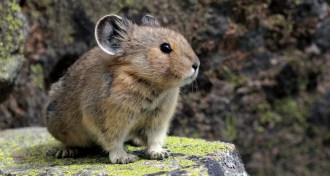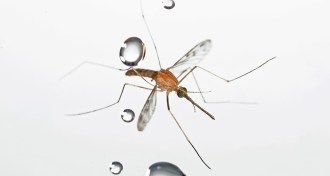Life
Sign up for our newsletter
We summarize the week's scientific breakthroughs every Thursday.
-
 Ecosystems
EcosystemsChanging seasons inspire science
Researchers are tapping into the wealth of observations being made by citizen scientists nationwide. One of the largest repositories of such data is maintained by the USA National Phenology Network.
By Sid Perkins -
 Plants
PlantsThe Man Who Planted Trees
Lost Groves, Champion Trees, and an Urgent Plan to Save the Planet by Jim Robbins
By Science News -
 Animals
AnimalsMr. Hornaday’s War
How a Peculiar Victorian Zookeeper Waged a Lonely Crusade for Wildlife That Changed the World by Stefan Bechtel.
By Janet Raloff -
 Neuroscience
NeuroscienceHurt Blocker
The next big pain drug may soothe sensory firestorms without side effects.
-
 Animals
AnimalsAnimals on the Move
Worldwide — on land, in the sea and in rivers, streams and lakes — wildlife is responding to rising temperatures.
-
 Life
LifeGrasshoppers’ terror outlives them
After an existence plagued by predatory spiders, the insects pass into oblivion, leaving a legacy of impoverished soil.
By Devin Powell -
 Life
LifeCalcium offers clues in mass extinction
Ocean acidification during Permian period may have caused the Great Dying.
By Devin Powell -
 Life
LifeYou have grandpa’s chromosome tips
Older fathers pass more gene-protecting DNA to their paternal grandkids.
-
 Life
LifeInvasive mite worsens honeybee viruses
Once-obscure deformed wing virus swept to prominence in honeybee colonies in Hawaiian islands as invasive pest arrived.
By Susan Milius -
 Life
LifeMicrobes flourish under Arctic sea ice
Oceanographic expedition surprised to find photosynthetic microorganisms thriving under frozen surface.
By Devin Powell -
 Animals
AnimalsHow a mosquito survives a raindrop hit
Lightweight insects can ride a water droplet, as long as they separate from it before hitting the ground.
By Susan Milius -
 Life
LifeAncient birds wiped out huge insects
Competition in the air trumped the advantage of extra atmospheric oxygen.
By Devin Powell